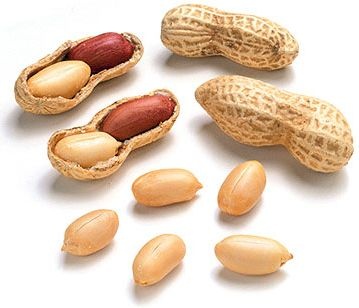The study was conducted on the farmer’s fields in Kohat district at four different locations during the year 2007 to find out the most suitable and successful cultivation production technology throughout the Kohat district. An improved variety of Groundnut BARD-479 (V1) was tested against local variety (V2) with improved (P1) vs farmer practices (P2) under dry land conditions of Kohat district. Seed of the variety was obtained from NARC, Islamabad. The experiment was laid out in randomized complete block design with three replications and a plot size of 4000 m.
T1: Improved variety* + Improved Practices** (V1 + P1)
T2: Improved Variety + Farmer Practices**** (V1 + P2)
T3: Farmer Variety*** + Improved Practices (V2 + P1)
T4: Farmer Variety + Farmer Practices (V2 + P2)
* (IV) BARD-479 Semi erect
** (IP)
- Fertilizer application @ one bag DAP/acre
- Line sowing
- Row to Row- 45cm
- Plant to plant- 10cm
- Cultural practices i.e. weeding and pest control
*** (FV) Local variety Spreading type
**** (FP)
- No fertilizer application
- Broad cast sowing
- No weeding and pest control
- Number of Plants/m²
Data given in table 1-A indicated that locations and interactions between location × practices were found to be non-significant. Farmer practices (P2) produced maximum (8.0) plants/m² compared to 6.6 observed under improved practices (P1). This can be attributed to higher seed rate used in farmer practices. Data in table 1-B showed that farmer variety (V2) produced maximum number of plants/m (7.8) as compared to (V1) improved variety (6.8 plants/m). Interaction between locations × varieties was found to be statistically ineffective. However, at L3 with farmer variety (V2) produced maximum plants/m (8.4). interaction between practices × varieties was significant. Maximum number of plants/m (8.9) was produced by farmer variety (V2) planted by farmer practices (P2). The remaining three treatments i.e. P2 × V1, P2 × V2 and P1 × V1, P1 × V2 produced statistically equal number of plants/m. Interaction between locations × practices × varieties was found to be non-significant. Maximum number of plants/m was recorded at L2 with farmer practices (P2) using (V2) farmer variety (9.8).




